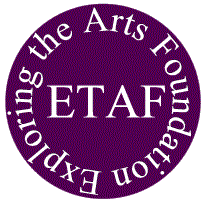|
| ||||||||||||||||||||||||||||
|
||||||||||||||||||||||||||||
|
|
||||||||||||||||||||||||||||
an appreciation of the language artsCertainly, man is not the only creature capable of communication. For example, cells and molecules transfer information between each other. Some plants seem to know what other plants are doing in distant parts of the jungle. Higher animals "speak" to each other in various ways, ranging from emitting coded odors (insect pheromones) to dancing (bee "talk") to growling by wolves. Birds flock and fish school. Animals also speak to people. Your pet knows how to ask for food or express love and you know how to encourage it. Some primates even employ formal sign language to communicate with their keepers. (For more on this, read the How To Write Right©—The Writing Right© White Paper.) But here The Muse Of Language Arts is not so much concerned with communications as with articulated communications. With the possible exception of a few primate species, articulated communications are perhaps the unique province of mankind. When it comes to communications, what do we mean by articulated? When one articulates, one utters speech or writes words which (or could) represent speech in distinct syllables. In short, one formulates language. What is language? Technically, language is communication by voice in the distinctively human manner, using arbitrary sounds in conventional ways with conventional meanings. Looked at analytically, language is a collection of abstract interrelated phonic or written symbols which together express ideas. Articulated communications express ideas easily and fluently, with clarity and effectiveness, so that one idea stands in a distinct, precise, and meaningful relationship to all others, in a unified whole. In short, when one articulates, one not only communicates, one has language. It is with articulated communications—language—that The Muse is concerned in these pages. Not content with founding society on language and basing all private human relationships on language, in typical fashion man has raised language to a fine art. Literature—poetry and prose—are fine arts; but in a sense, so are most forms of speech or writing. Even ordinary conversation has been raised to an art—witness the raconteur, the popular song writer, the teller of tall tales or ghost stories, and the standup comic. Considering what man has accomplished with language, employing the term art in the term language arts is fully justified. It is with recognition of the profound role of language in human affairs that The Muse Of Language Arts dedicates these pages to the language arts. | ||||||||||||||||||||||||||||
|
| ||||||||||||||||||||||||||||
Search this web site with Electricka's Search Tool:
tap or click here
Electricka's Theme Products
Shop At Cafe Press
This web site and
its contents are copyrighted by
Decision Consulting Incorporated (DCI).
All rights reserved. | ||||||||||||||||||||||||||||



